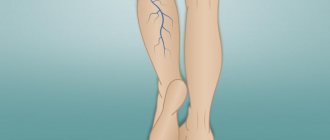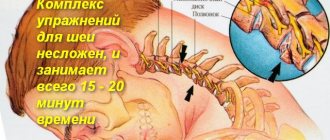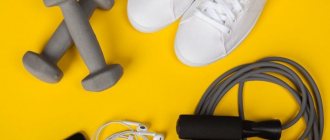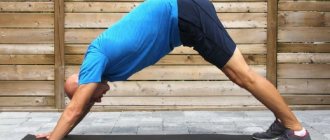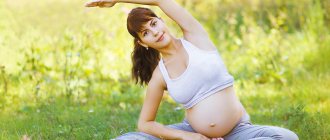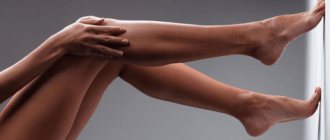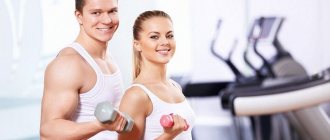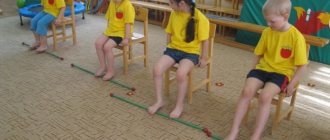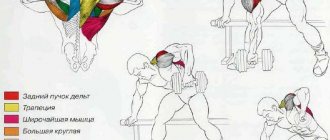Only a doctor, having the patient’s tests in hand, can specifically answer the question of what sports can be done with osteochondrosis. There are many degenerative-dystrophic diseases of the spine, each of them has its own characteristics and stages. In some cases, significant pain may occur, in others there may be limited mobility.
Professional sports loads have a negative impact on health - this is a well-known fact, but feasible and somewhat limited loads can help relax muscles and prevent the development of the disease. However, there are also contraindications, for example, running with cervical osteochondrosis is contraindicated, but it is recommended to walk more to improve blood circulation.
In the same way, it is impossible to categorically answer the question, is it possible to exercise in the gym with osteochondrosis? It all depends on the stage of the disease and what stress the body will experience during training.
If exercise in the gym is intense, the disease will take an acute form, resulting in severe pain, i.e. a person with osteochondrosis will not be able to play sports, no matter how much he wants to. In other words, osteochondrosis and various sports can be combined, but wisely, and any training must be approved by a doctor.
What influences the development of the disease?
The main factor provoking spinal chondrosis is uneven load. It occurs as a result of sleeping on a soft mattress, improper sitting position, or wearing anatomically incorrect shoes. Additional factors that activate the pathological process include the following:
- excess weight;
- insufficient physical activity;
- physical stress;
- genetic predisposition;
- age-related changes in the musculoskeletal system;
- violation of metabolic processes;
- pregnancy;
- prolonged and frequent dehydration of the body.
All these factors have a negative impact not only on the condition of the musculoskeletal system, but also on the body as a whole.
What conclusions can be drawn?
Daily exercise becomes an excellent prevention of involvement of healthy spinal structures in the destructive-degenerative process. They also help eliminate neurological symptoms - surges in blood pressure, headaches, dizziness, and a feeling of shortness of breath.
But the type of sports training should be agreed upon with your doctor. Otherwise, after a temporary improvement in well-being, not only the condition of the spinal segments will deteriorate, but also the functioning of all vital systems.
Indications for exercise therapy
Therapeutic exercises can not only relieve the symptoms of cervical osteochondrosis, but also prevent further relapses of the disease.
Exercise therapy has no gender or age restrictions. Indications for attending health classes:
- presence of muscle spasm;
- pain;
- weak muscle corset.
Such training will help not only fight degenerative-dystrophic changes in the spine, but also improve the patient’s general condition. Physical education will give you strength and vigor.
If treatment of the disease was started at the initial stage, then physical therapy can not only relieve pain, but also eliminate the disease.
When performed correctly, such gymnastics can reduce pressure on nerve endings.
Is it possible to play sports with osteochondrosis?
Types of sports that are suitable for this disease:
- Swimming;
- Gymnastics or physical therapy;
- Fitness classes;
- Yoga;
- Shaping.
Sports that are harmful for osteochondrosis:
- High jump;
- Weightlifting;
- Professional jogging;
- Tennis and badminton lessons.
There are also a number of dangerous sports that should not be practiced, these include: football games and hockey, pull-ups, alpine skiing, jumping from heights. And although they are not contraindicated, they should be practiced with extreme caution.
What is required for training?
Gymnastics kits may be required for classes. These are soft mats, rollers and sticks. For hand and foot exercises you will need tables. These are special multi-section tables that can be adjusted in height. Outwardly, they resemble more of a simulator than a regular table. They are designed for exercise lying or sitting at different angles.
Depending on the exercises performed, you may need:
The first three items are necessary for joint gymnastics. Roller carts are designed for those patients who cannot fully support their limbs.
In some cases, when performing exercises for the back and neck with osteochondrosis, a gymnastic stick is used. We talked about this in more detail in this article.
Swimming and exercise in water
This is exactly the type of exercise that orthopedists recommend that people with spinal diseases perform regularly. In water it is impossible to make such a sudden movement that would lead to injury. Swimmers have athletic bodies with well-developed muscles. So it is too early for orthopedic patients to be upset that they will not be able to build a muscle corset. Regular swimming will help build muscle mass in your arms, back and stomach.
In order to swim in the pool, you will need to get a certificate from a dermatologist confirming the absence of skin diseases. To avoid any difficulties with your first training sessions, you can use the services of a trainer. There are also people in the pool, as well as in the gym, who will help you establish the correct technique for various swimming styles.
Exercise therapy techniques
A doctor or trainer will help you choose the most effective training method for osteochondrosis.
The specialist should also familiarize the patient with basic safety rules. There are a large number of different methods of performing exercise therapy for osteochondrosis. Passive traction is most often used. It is carried out under the pressure of its own weight. The duration of the training varies depending on the patient's condition. It can last from 5 to 20 minutes. If necessary, additional weight can be added to perform traction.
We invite you to watch a video that demonstrates exercise therapy exercises for osteochondrosis:
Methods for restoring the upper spine
There are many exercises and techniques that allow you to restore the spine. You can study either in a group in a special center or at home.
Home workouts help not only eliminate pain, but also prevent it. Before doing this, you should consult a doctor or trainer. A positive effect will be observed only with the correct technique and regular training.
Any activity should begin with a light warm-up. If there is no pain, you can stretch the knee vessels and ankle. Several squats and body twists are recommended.
It is recommended to train in comfortable clothes that will not hinder movement. It is desirable that it be made from natural and pleasant to the touch fabrics.
Twists and bends are two of the simplest and most effective exercises. Therapeutic effect:
- pain relief;
- relieving stress from the cervical vertebrae;
- improving spinal mobility.
It’s best to start with repetitions, and then gradually move on to inclines. It is recommended to do each exercise 10 times.
With the help of axial rotation, you can stretch the neck muscles well and improve their elasticity. Exercise activates blood flow through the vessels. It will be especially useful for people with sedentary work. During the working day you need to do 2-3 approaches of this exercise.
- Starting position – standing.
- Your legs should be spread apart, your shoulders should be lowered and your chin should be raised. During the exercise, your shoulders should be as relaxed as possible.
- You need to move your body and shoulders back for 5-8 counts while keeping your head in place.
- Return to the starting position as smoothly as possible.
- The optimal number of repetitions is 8 times.
This exercise is aimed at stretching the muscles and increasing their elasticity. It will also help relieve compression of pinched muscles.
This stretching is recommended to be done under the supervision of a trainer.
Algorithm:
- When tilting to the right, try to touch your earlobe to your right shoulder.
- It is necessary to fix the pose for 5-10 seconds.
- The left hand rests on the head and makes several springing movements.
- Similar movements are performed on the second side.
Before starting a workout, you need to warm up your muscles well. Otherwise, you can injure your ligaments and tendons.
In terms of technique, exercises with a towel are similar to stretching with effort. It allows you to stretch the muscles that support the cervical vertebrae. A terry towel folded several times is used as a load amplifier.
The exercise is done as follows:
- The towel is rolled up and clasped with two hands at a distance of 30-35 cm from each other.
- You need to bring the towel behind your head and place it behind the back of your head.
- When pulling the towel up, the neck muscles should not offer resistance. To achieve this, you can tilt your head back a little.
The optimal number of repetitions is 8-10 times. If you do the exercise correctly, you can quickly get rid of muscle spasm and pain syndrome (we talked about other ways to relieve muscle and neck spasms during SCH in this article).
There are special gentle complexes that allow you to keep your neck muscles toned. It is necessary to perform such exercises only during the period between exacerbations.
Algorithm for the first exercise:
- The starting position is standing, arms down, straight posture.
- Slowly you need to move your head 90 degrees. At the beginning, the amplitude should be minimal; as the patient’s condition improves, the head rotation can be increased to 90 degrees.
- Similar movements are performed on the second side.
If you turn too quickly, you risk dislocating your vertebrae. The number of repetitions can vary from 7 to 10 times in each direction.
To perform the second exercise, you should remain in the same starting position - standing with a straight back. You need to gently lower your head and try to touch your chin to your chest. If it is not possible to do this, you should perform the exercise as much as possible.
Dr. Bubnovsky has developed a number of exercises that will help alleviate the patient’s condition with cervical osteochondrosis and are suitable for performing at home. They will be an excellent disease prevention.
Physiotherapy
Physical therapy for the cervical spine is prescribed if the patient has:
- vertebrogenic pain;
- clinical symptoms of muscular pathology of the upper spine;
- intervertebral disc defects - displacement or fusion.
Like any method of treatment, a set of physical therapy exercises for cervical osteochondrosis also has a number of contraindications:
- aggravated degree of damage to the neck muscles;
- rehabilitation period after neck surgery;
- neurological diseases;
- violation of human orientation in space;
- sudden changes in blood pressure.
Ointments or gels for osteochondrosis relieve pain in the muscle tissue of the neck, but do not eliminate the cause of their occurrence - they do not fight the displacement of intervertebral discs.
A healthy diet, an active lifestyle and exercise therapy for the neck with osteochondrosis alleviate the patient’s condition and eliminate acute pain.
The specialist compiles a set of isometric exercises to perform at home, taking into account the individual characteristics of the patient and the following factors:
- the purpose of physical education (treatment or prevention);
- symptoms of vestibular and musculoskeletal disorders;
- state of the cardiovascular system.
The duration of the daily physical education complex at home should be at least fifteen minutes.
Today there are a large number of ways to alleviate the patient’s condition. Gymnastics for cervical osteochondrosis and physiotherapeutic exercises at home are a simple but at the same time effective method of treatment. Gymnastics with cervical osteochondrosis includes two complexes that help relieve fatigue from the neck muscles. The correctness of the complex can be seen in the video on the Internet.
How to increase the effectiveness of classes?
An integrated approach will increase the effectiveness of training. It is important that the classes are regular and that the exercise technique is correct.
The patient must:
- lead a correct lifestyle;
- to harden;
- periodically undergo preventive massage courses.
The diet of a person with osteochondrosis must contain all the necessary vitamins and nutrients to restore injured tissues. Water-salt balance plays an important role. It is recommended to drink enough liquid.
The optimal amount of water depends on age and severity of the condition.
If necessary, the doctor prescribes a special diet. Its essence is fractional nutrition, that is, food should be taken in small portions 5-6 times a day. This eating pattern will allow you to reduce body weight, thereby relieving the load on the spine.
Therapeutic massage for osteochondrosis should be performed by a specialist. Initially, he must make sure that there are no contraindications. Impact on the affected muscles allows you to relieve pain. Therapeutic effect:
- improved blood circulation;
- prevention of muscle atrophy;
- restoration of nutrition of soft tissues and discs.
We invite you to watch a video about the benefits and contraindications of massage for osteochondrosis:
It is recommended to take a contrast shower in the morning and evening. If you douse yourself with cold water immediately after waking up, the load on the heart increases, so it is best to take a shower 30-50 minutes after waking up.
To prevent injury to the heart muscle, you should alternate the pressure from 40 °C to 20 °C.
You should not take a contrast shower after being in the cold for a long time, this is dangerous for hypothermia.
Relapse Prevention
To prevent relapse, you must carefully monitor your diet and exercise. Basic recommendations:
- Conducting moderate activities. This could be swimming, gymnastics or non-contact wrestling.
- During prolonged sedentary work, it is necessary to periodically take breaks to warm up. They will help restore normal blood circulation.
- It is best to sleep on an orthopedic mattress with a flat surface. You should avoid pillows that are too flat.
- Lifting or carrying heavy objects should be avoided.
- It is necessary to give preference to orthopedic shoes.
It is important to monitor your emotional state. Increased anxiety and stress provoke an antispasmodic reaction. To eliminate it, you need to learn relaxation methods.
Useful tips and tricks
Doctors emphasize that at the initial stage, cervical osteochondrosis is practically invisible and does not cause much discomfort. At this stage, treatment can only be carried out with the help of exercise therapy. It is necessary to reconsider nutrition and nutritional conditions.
Experts indicate that the best prevention of cervical osteochondrosis is an active lifestyle.
You should completely stop smoking. It is recommended to monitor your posture, especially when sitting for a long time or staying in one position. In severe forms of cervical osteochondrosis, special corsets and more active drug therapy are prescribed.
Cervical osteochondrosis reduces a person’s quality of life. With this disease, a feeling of stiffness and pain occurs. To improve the condition and prevent complications, it is recommended to perform special therapeutic exercises.
The fact is that there is no osteochondrosis of one department. This is a process that necessarily affects the entire spinal column.
Today we will talk about osteochondrosis, in particular, about osteochondrosis of the cervical spine. The fact is that there is no osteochondrosis of one department. This is a process that necessarily affects the entire spinal column. Why then do doctors diagnose osteochondrosis of the lumbar, cervical or thoracic region?
Thus, they emphasize not the locality of the process, but its maximality. What worries you most now is called your osteochondrosis. So when you have problems with one department, know that if you don't do something, other departments will suffer someday. Subsequently, your diagnoses will expand.
Now let's talk about exercises that only aggravate a disease such as cervical osteochondrosis, and are categorically contraindicated for you.
If you already have osteochondrosis of the cervical spine or do not have it yet, then with such exercises you can provoke it. These are very common exercises that many of you do, sincerely believing that these exercises improve your health and have a healing effect.
We will talk about three exercises. Two of them you make at home. The third is used in the pool. Everyone knows that the best treatment for osteochondrosis is swimming.
So, the first is the exercises with which coaches often begin their training, warm-up exercises. We begin to intensively wave our arms and legs in order to somehow turn on our body.
Some trainers start doing the same thing from the head. That is, sharp turns of the head up and down, left and right, twisting movements. This is absolutely bad for the cervical spine.
Such movements can cause the vertebrae to slip. At this point, your muscles should hold the vertebrae in place. Thus, they clamp our vertebrae, but also the arteries that go to the brain.
Therefore, the consequences of such sudden movements during warm-up lead to dizziness and darkening of the eyes. The likelihood of a stroke also increases. If suddenly during training the trainer starts doing such exercises, you should stop or do them with a small amplitude.
The second exercise is also very common. You do it in the gym, in training and at home. When we pump up our abdominal muscles, this should also be done correctly. If it is performed incorrectly, then the entire load will fall not on the abdominal muscles, but on the neck muscles, overloading them.
When you place your hands behind your head and reach for your knees, your neck muscles tense and your abdominal muscles relax.
Features of playing sports with osteochondrosis
For the cervical region physical. the load can relieve pain and improve blood circulation. There are a large number of workouts that can be done during illness; the most accessible are considered to be walking, short jogging and cycling. But all sports should be moderate. If you are jogging, it should be slow, with a slight increase in pace. If you want to engage in active sports, you should consult your doctor and be careful.
Thoracic department. If you have a disease of the thoracic region, you should pay attention to exercises with the torso tilted, which will help eliminate muscle tightness and eliminate pain. Often, thoracic disease appears due to a sedentary lifestyle; therapeutic exercises are best suited here. But doctors say that with such a diagnosis, treatment must be comprehensive.
Lumbar region . Playing sports in the presence of lumbar osteochondrosis has some peculiarities. Indeed, in addition to sports, the patient should adhere to a special diet, since the disease can affect the condition of the gastrointestinal tract. In this case, it is worth frequently doing various water procedures, stretching the axial skeleton, and also regularly doing therapeutic massage.
Indications for performing neck exercises
The neck is the most vulnerable area on the human body. It is through it that all vital vessels pass, and useful substances enter the brain. Nerves pass through the neck, through which impulses flow that regulate human activity. Therefore, you need to treat it as carefully as possible.
With the head in a natural position, the center of the ear should be approximately at the same level as the center of the shoulder, plus or minus two centimeters. The load on the entire spinal column is about five kilograms. When the head moves forward, for every two and a half centimeters forward, the load increases by five kilograms, which contributes to the occurrence of hypertonicity of the muscles of the neck and shoulder girdle, which leads to diseases.
If a person is constantly in an uncomfortable position, tense muscles clamp blood vessels and lymphatic ducts, blood circulation worsens, and the brain stops receiving the amount of oxygen it needs.
Exercise is the best way to prevent problems and pain in the joints of the neck and shoulders. It has a positive effect on blood circulation throughout the body. By performing neck exercises at home, the body's tone increases and factors that contribute to the development of chondrosis in people with a sedentary lifestyle disappear.
Why does your neck hurt: about the withers, osteochondrosis and hypertension
- First of all, the entire collar area suffers, which leads to the development of osteochondrosis of the cervical spine;
- Blood flow in this department slows down and leads to the deposition of fat cells;
- At a late stage of the disease, a person feels severe pain, which is caused by vascular syndrome.
People say that people with withers solve all complex issues on their own, without outside help. This is not to say that there is no truth in this statement, however, this problem occurs as a result of weakening muscles due to frequent sitting slouched and a sedentary lifestyle.
A strong muscular corset of the spine contributes to its health. Otherwise, the nerve endings extending from the spinal cord are compressed, and the blood supply deteriorates, preventing the brain from receiving all vital substances.
A compressed artery causes hypertension, which can cause a stroke or heart attack. To prevent them, it is recommended to regularly perform neck exercises.
When the first signs of chondrosis appear, you should consult a doctor who will offer the optimal solution to the problem. Thanks to timely treatment from the initial stage of the disease, its serious consequences can be avoided.
Symptoms of osteochondrosis include:
- Pain in the back of the head, shoulders, and arms. It has an aching character, arising from the side or back. It is very difficult to turn your head;
- A patient with osteochondrosis experiences frequent dizziness, ringing in the ears, and loss of balance while walking;
- Weakness occurs in the upper limbs, face and neck.
The disease at an early stage can be treated with neck exercises for osteochondrosis. Traditional treatment is used only when hard lumps are detected in the collar area.
Review of simulators
For those patients suffering from spinal problems, there are a number of exercise machines that can improve their physical condition without compromising their health. These sports devices are divided into two large groups:
- Power.
- Cardio.
The first version of the exercise equipment is aimed at developing the muscle groups of the back, increasing their tone and elasticity.
The second type of device is designed to improve joint mobility , strengthen the heart, and make the body resilient.
Strength training equipment
The considered version of the exercise equipment is aimed at developing the muscle groups of the back, increasing their tone and elasticity. In turn, strength training equipment is divided into several types.
Block-type trainers
The devices are a system of dead points (blocks) through which a steel cable is passed, on one side of which there is a changing load, and on the other side a handle is attached.
By pulling the handle at a certain angle, the corresponding muscle tension is created. Article on the topic: Detailed instructions for using orthoflex
Strength training machines with vertical block movements are especially popular. This allows you to load certain back muscles in the first phase of the movement, and to stretch the sore spine in the second phase. The following large muscles can be worked on:
- Trapeze.
- Lat.
- Direct.
By performing exercises on block exercise machines, you can not only get rid of cervical osteochondrosis, but also completely eliminate pain in the lumbar region.
Rules for doing the exercises:
- Choose a weight that allows you to make movements smoothly, without jerking.
- Jerking is not allowed. This is a sure way to injure the vertebrae.
- When the handle with the cable is pulled towards the body, exhale, and when removed, inhale.
Lever
Devices of a mechanical type, fundamentally consisting of a lever with a weight on one side and a handle on the other. Using such simulators, you can “load” any muscle groups in the body, including the back. In most cases, with the help of presses in these devices, the trapezius and latissimus muscles are stimulated, which maintain the spinal column in normal condition.
It is worth remembering that you cannot put heavy weights on this kind of exercise equipment in order to avoid severe impact on the spinal discs.
Power frames and power machines
This type of sports equipment is designed to perform movements aimed at developing the rectus dorsi muscles , quadriceps and back of the thighs.
Fundamentally, devices of this type are double steel elements made of profiled pipes, mounted on a massive base. The barbell is placed between the pipes. Double profiled pipes limit the movement of the rod, allowing it to move exclusively vertically. When performing squats, standing presses or deadlifts, the movements are correct, which is important not only for the spine, but also for the developed muscles of the lower back, deltas, and trapezius. A design feature of power frames is the presence of special locking elements that limit the height trajectory of the barbell. This is important for underwear performing dangerous squats. It happens that when squatting, due to overestimation of strength or unsuccessful movement, there is a risk of not getting up with the barbell at the lowest point of the movement trajectory. Stoppers eliminate this dangerous possibility. Thus, a person using such a device can exercise independently, without any supervision or insurance from a supervising instructor.
Despite the insurance in the form of stoppers, movements should be performed with caution. Beginners should work with an empty bar during their first workouts to adapt the muscles to subsequent loads.
Movements should be at the same slow pace.
Body weight machines
Sports equipment is a mandatory attribute of gyms . Any gym or fitness club is equipped with these exercise machines. Such equipment includes:
- Crossbars (horizontal bars). The equipment is designed for performing pull-ups. Helps not only with cervical osteochondrosis, but also with problems with the discs of the thoracic and lumbar spine.
- Bars. The equipment is useful for stretching the lumbar vertebrae.
- Swedish wall. Sports equipment is useful for stretching the entire spine.
- Press bench. A horizontal bench allows you to strengthen your abdominal muscles, which will create a natural corset to maintain the spine in a normal position. In addition, if you use a board with a reverse slope, you can not only pump up your abdominal muscles, but also stretch the disturbing vertebrae.
- Hyperextension. The equipment is structurally similar to a regular abdominal board, but is also equipped with a special element for fixing the legs. To perform the hyperextension exercise, you need to lie on your stomach on the board, put your legs under a clamp that does not allow you to fall from the machine. The exercise in this device is isolated, i.e., aimed exclusively at strengthening the rectus dorsi muscles. In addition, at the point where the torso is tilted towards the floor in hyperextension, the necessary stretching of the spine occurs.
The listed sports equipment allows you to perform exercises using your own body weight, which has a beneficial effect not only on strengthening the abdominal and back muscles, but also on stretching the spinal discs.
Movements in such devices are performed without jerking, so as not to feel pain in the spine and muscles.
When stretching the spine vertically on a horizontal bar or wall bars, you cannot jump to the floor; it is enough to lower one leg first, and then the other.
Strength equipment
Devices in this group make it possible to perform exercises using the resistance of your own body. Specialized equipment includes:
- Yalovitsyn's swing.
- Evminov's simulator.
This group of devices is designed to strengthen the spinal muscles and stretch the vertebrae.
At first, due to some difficulty in getting used to the equipment, it is advisable for the patient to work under the supervision of a trainer-instructor. When performing exercises on such equipment, you need to monitor the speed of movements. Jerks are excluded. Throughout the entire trajectory of movements, smoothness and regularity are maintained. This will help to load the back muscles in the first phase of the movement, and to stretch the spine in the second.
Cardio
Exercise machines in this group are represented by a variety of devices that are popular not only for equipping public gyms and fitness centers, but also for equipping a home sports corner in a comfortable apartment.
Exercise bike and osteochondrosis
The sports equipment completely imitates a real bicycle.
The advantage of the simulator is its compactness, so it can be easily placed in the room, without any space constraints. Exercise bikes are used during the period of recovery of the body after basic drug therapy, as well as as a prophylaxis against osteochondrosis. The simulator primarily loads the leg muscles, starting from the feet to the hips. In part, its action is aimed at strengthening the abs and lumbar muscles. The device helps relieve excess weight, which is beneficial for the spine during vertical loads while walking. Article on the topic: Pain in the right side after appendicitis
Before using the exercise bike, you should adjust the height of its seat.
For greater unloading and stretching of the vertebrae in the lumbar region, it is advisable to raise the seat so that the patient’s torso is tilted and the main emphasis falls on the forearms.
Treadmill
Exercise equipment is used only for the prevention of osteochondrosis.
You should not work on the simulator if there are existing vertebral displacements, since the vertical impact load during running increases the deformation of the discs. The device consists of a running platform and a stand with handrails. Depending on the model of the simulator, the racks are equipped with digital displays that monitor heart rate, mileage, etc.
Exercise machines of this type successfully solve the problem of strengthening the muscles of the legs and back.
If you have minor pain in the back, you should avoid the treadmill so that the pain syndrome does not develop with a large negative effect.
Ellipsoid
The equipment belongs to the group of cardio-stimulating simulators that can improve the condition of the cardiovascular system and burn excess body fat.
In addition, the ellipsoid can strengthen the muscles of the lumbar spine. The design of the ellipsoids is made in such a way that it is impossible to make sudden movements on it due to the existing magnetic mechanism. This is important for the rehabilitation of patients with back problems due to osteochondrosis. However, we must not forget that even with such simulators a person receives vertical loads on the spine. For this reason, training on ellipsoids is allowed only during the rehabilitation period, when there are no painful symptoms of osteochondrosis.
The exercise machine is capable of qualitatively strengthening your legs, back and abs.
During the first lessons, you should start with the smallest loads so that the movement of the foot pedals is easy.
Cardiostepper
The equipment is a structure consisting of a stand with handrails and two pedals for placing the legs.
The device completely simulates stair walking. Those who exercise on such a simulator receive a significant load on the spine due to the vertical position of the body. As a result, it is unacceptable to treat those who have serious complications associated with osteochondrosis. Training on a cardiostepper is acceptable in the case of prevention of this pathology. The result of training on the simulator is an improvement in heart rate, strengthening of the lumbar muscles, as well as quadriceps and hamstrings. To avoid back problems, sudden movements are avoided on the cardio stepper.
You should choose a measured rhythm to simulate climbing the stairs.
Rowing machines
Devices of this type are designed to develop almost all muscle groups, including legs, shoulders and back.
The training equipment simulates real rowing in a boat. When performing the exercise, during the relaxation stage, not only the triceps and latissimus dorsi muscles are stretched, but also the vertebrae. This is why the rowing machine is important for patients with back problems due to osteochondrosis. Most rowing machines consist of a frame on which a foot rest and a cable with a weight are attached. By pulling the cable towards himself by the handle, the trainee receives a load on the muscles of the back and arms. Training on the simulator is available to those who are in the rehabilitation stage.
When rowing, jerking is not allowed, movements are smooth and at the same speed.
What exercises to do if your neck hurts: indications and contraindications, rules of execution
It is possible to get rid of neck pain and related diseases, but it will require some effort, time and lifestyle changes.
To bring the spine back to normal, the muscle corset and ligaments should be strengthened.
Even with pain, the best way to get rid of osteochondrosis of the cervical spine is physical therapy for the neck and massage. Most often, the classic method of massage is used, which affects all areas of the cervical corset and vertebrae.
When performing gymnastics, first of all, you should determine which neck exercises for osteochondrosis can be done and which cannot. You also need to know in what cases neck exercises should not be performed.
- Complications of osteochondrosis, accompanied by severe pain even at rest;
- Instability has been detected in the cervical spine, in which the blood supply to the brain is significantly impaired, in this case dizziness occurs;
- The presence of acute diseases or exacerbation of chronic diseases;
- Severe form of chronic diseases;
- Oncological diseases;
- Blood clot formation;
- The occurrence of bleeding;
- Increased body temperature;
- High blood pressure;
- Acute poisoning.
In all of the above circumstances, neck exercises for osteochondrosis are not performed. To accurately diagnose the disease, an examination by a specialist is necessary. Existing contraindications are discussed with a neurologist or a doctor conducting physical therapy for cervical osteochondrosis. Additionally, tests or x-rays may be prescribed. The doctor, having analyzed all the indicators, develops a set of exercises against osteochondrosis of the neck individually for each patient.
- Therapeutic exercises for the neck for osteochondrosis are not performed if severe pain occurs during it. In this case, you need to finish the current exercise and start the next one;
- If the appointment causes severe discomfort, it is skipped;
- Movements during the exercise for pain in the neck and shoulders should be smooth and uniform;
- The load during therapeutic exercises for osteochondrosis of the neck should be increased gradually;
- The techniques are performed from simple to complex;
- Neck exercises for osteochondrosis of the cervical spine are performed daily, otherwise it will not bring any effect;
- Exercises for neck chondrosis should be done half an hour after eating. Clothing should be comfortable and the room should be regularly ventilated.
When treating osteochondrosis with exercise therapy, you should take into account physical activities that are prohibited:
- Long or short distance running;
- Jumping;
- Swing your arms;
- Projectile throwing;
- Shot put.
The benefits of exercises against cervical osteochondrosis
As noted above, the causes of osteochondrosis are a sedentary lifestyle, weakening of the muscle corset and curvature of the spine. In the initial stages of the disease, physical exercise will help stop its further development.
Thanks to regular exercises, blood circulation improves, the muscles of the spine and cervical region are toned, the load on the spine is reduced, the distance between the spinal discs increases, the friction between them decreases, and the frequency of pain decreases accordingly.
And if the disease has developed to such an extent that frequent severe pain is felt, it is necessary to consult a specialist. He will establish an accurate diagnosis, determine the extent of the disease, prescribe a course of treatment and massage. After completing the course of treatment, you will be prescribed therapeutic exercises, which you can do yourself at home. This treatment of cervical osteochondrosis at home will allow you to quickly forget about it.
Exercises must be properly selected and performed regularly. Otherwise, there is a risk of deterioration in your health.
For whom exercises are contraindicated?
People with unstable cervical vertebrae, acute pain, acute infectious diseases with fever, tumors, and heart attacks should not do the exercises.
Everyone else is recommended to pay attention to physical education for 15 minutes a day. You may feel slightly dizzy while doing them. Stop, take a deep breath and continue doing the exercises smoothly and slowly.
Exercises to get rid of withers
It should be remembered that neck exercises should not be done in case of acute pain.
Every movement is performed smoothly and without harshness. You should start a set of neck exercises with a warm-up.
- Stand near a flat wall, pressing against it.
- Place your hands on your lower back. Stay in this position for one or two minutes.
- Every day the time needs to be gradually increased.
- Thus, the spine is strengthened and takes the correct position.
Then proceed to perform exercises for the neck muscles from the withers and for osteochondrosis:
- While sitting or standing, turn your head all the way in each direction. The movements must be performed ten times;
- Bend your head forward, trying to touch your chin to your chest;
- Take the starting position, clasp your hands behind your back, straighten them and pull them in the opposite direction from your back, tilt your head back all the way. Hold this position for 30 seconds;
Computer neck exercise
To get rid of the computer neck effect, you need to perform the following technique:
- Place your hands behind your back, clasping them together;
- Pull your face forward in the plane of the natural position of your head, without throwing it back.
- At the same time, pull your arms behind your back in the opposite direction away from you. Hold for 30 seconds;
- Take a natural position;
- Repeat the same in the opposite direction;
- Place your hands in a lock in front of you, pull them forward and your head back, without tilting back.
- Hold for 30 seconds;
- Return to starting position.
This exercise can be performed without hands (as shown in the photo), but with their help the effect is much better. Thanks to regular exercises for the collar area from the withers and computer neck, this problem can be solved after just a few weeks of practice.
